The Apple iPhone 11, 11 Pro & 11 Pro Max Review: Performance, Battery, & Camera Elevated
by Andrei Frumusanu on October 16, 2019 8:30 AM ESTCamera - Low Light Evaluation
It’s hard to argue against the fact that over the last 2 years, Apple has largely fallen behind in terms of low-light photography. The advent of computational photography with new dedicated night modes, along with competitor devices which have massively more performant camera hardware, meant that the iPhone XS ended up being one of the least competitive devices in low light conditions. Some developers out there have even tried to address this gap with third-party camera applications which deliver their take on computational photography night mode capture.
Apple seems to have made note of this and the new iPhone 11 series now does address this missing feature. Let’s see how it holds up against the fierce competition:
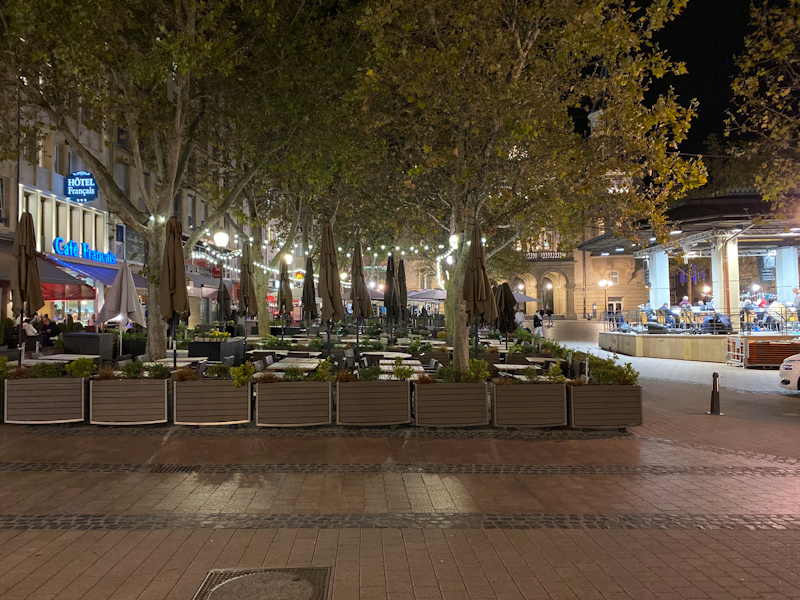
[ iPhone 11 Pro ] - [ iPhone XS ] - [ iPhone X ]
[ S10+(S) ] - [ S10+(E) ]
[ Pixel 3 ] - [ Mate 30 Pro ]
[ P30 Pro ] - [ Xperia 1 ] - [ G8 ]
Starting off with a low-light, yet still artificially illuminated scenario, we encounter the first aspect of Apple’s new camera: the night mode isn’t a dedicated mode that one can manually select. Rather, it's a mode that gets triggered automatically depending on the ambient light detected by the phone. In this scene, there was too much light available, and as such the phone wasn't able to trigger Night mode.
That isn’t to day that the iPhone falls behind, the main camera is still very much able to produce some excellent results. In such medium light scenarios, the telephoto lens’ wider aperture now allows the camera to actually use the module rather than falling back to the main sensor and cropping the scene, which is what the XS did.
Unfortunately, the wide-angle lens’ results here are just bad and it’s all just blurry. Huawei and Samsung clearly both dominate here in terms of low-light quality, with either better sensors such as the Mate 30 Pro, or making use of Night Mode on the wide-angle unit, something which isn’t available for the iPhone 11.
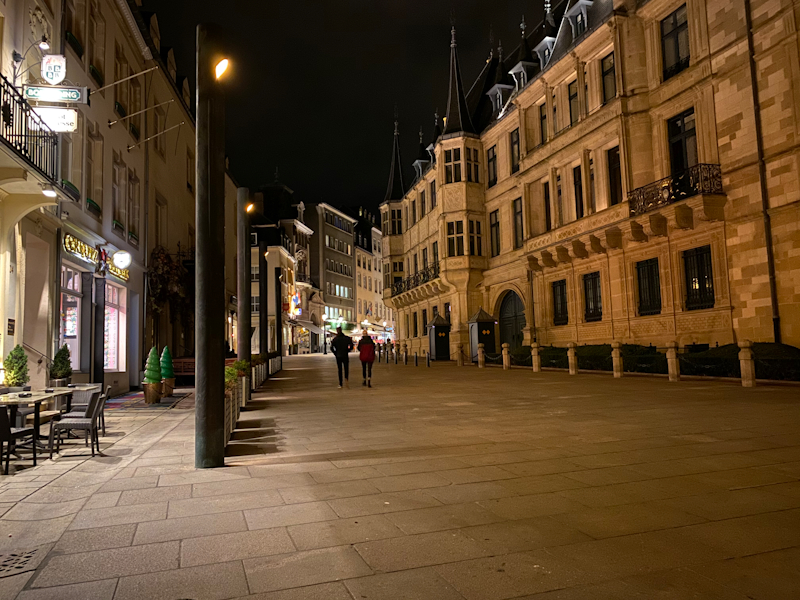
[ iPhone 11 Pro ] - [ iPhone XS ] - [ iPhone X ]
[ S10+(S) ] - [ S10+(E) ]
[ Pixel 3 ] - [ Mate 30 Pro ]
[ P30 Pro ] - [Xperia 1 ] - [G8 ]
Going to a darker scene, we now finally see Apple’s Night Mode in action. Apple’s non-night mode shot is actually more representative of the actual brightness of the scene at the time, but Night Mode really improves the amount of detail throughout the scene. Apple’s implementation here is superior to Samsung’s and Google’s, as it’s able to retain more detail and has a better handling of the noise. Samsung has the odd situation that the new Night Mode on the Snapdragon variants is inferior in quality to the Exynos based models, making things quite blurry. Huawei’s specialized low light RYYB sensor still is the best low-light camera.
It’s odd to see that Apple’s algorithm doesn’t attempt to bring down the highlights, as such the signs on the left which are still very much blown out and overexposed.
I tried to capture a picture with the Night Mode exposure set to the very maximum 10 seconds as made available in Apple’s camera UI, however the end result was always repeatedly always capped at the exposure the camera automatically selected, even if it did appear as if it’s capturing a 10 second shot. I retested this on the newest iOS 13.2 and things did change, as it was indeed able to capture a very different shot – so it seems the Night Mode behavior on iOS 13.1 is still bugged.
The iPhone’s 11 series' wide-angle module continues to be pretty terrible in low-light.

[ iPhone 11 Pro ] - [ iPhone XS ] - [ iPhone X ]
[ S10+(S) ] - [ S10+(E) ]
[ Pixel 3 ] - [ Mate 30 Pro ]
[ P30 Pro ] - [ Xperia 1 ] - [ G8 ]
Apple’s night mode here continues to impress as it’s able to reproduce an excellent representation of the scene with a lot of detail. Google’s Night Sight is comparable, or even better, in detail, however the colors are too vivid.
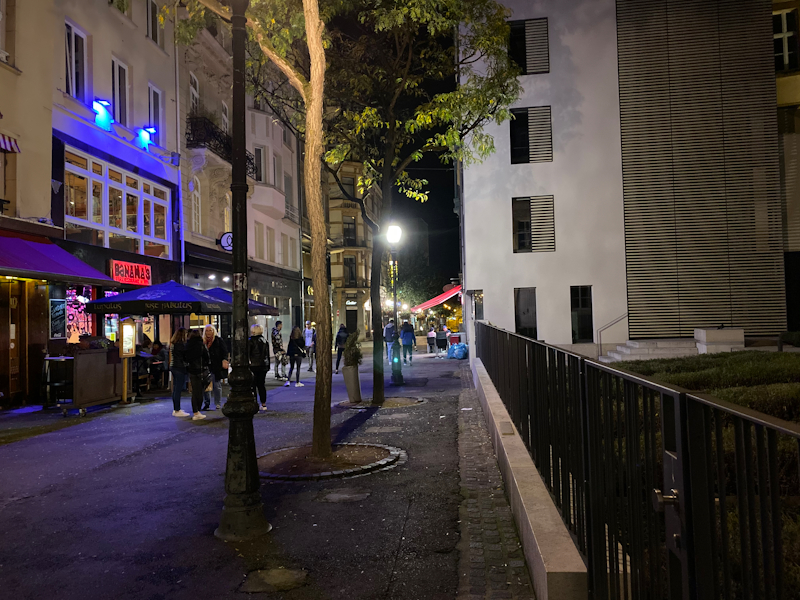
[ iPhone 11 Pro ] - [ iPhone XS ] - [ iPhone X ]
[ S10+(S) ] - [ S10+(E) ]
[ Pixel 3 ] - [ Mate 30 Pro ]
[ P30 Pro ] - [ Xperia 1 ] - [ G8 ]
We continue to observe that in more well-lit scenarios that the night mode doesn’t engage. Even without it, the new iPhone 11 is an improvement over the XS.
The wide-angle module remains terrible and frankly I’m a bit puzzled why it does so bad even in a more well-lit scene like this one. The phone gets pretty much embarrassed by all the other devices.
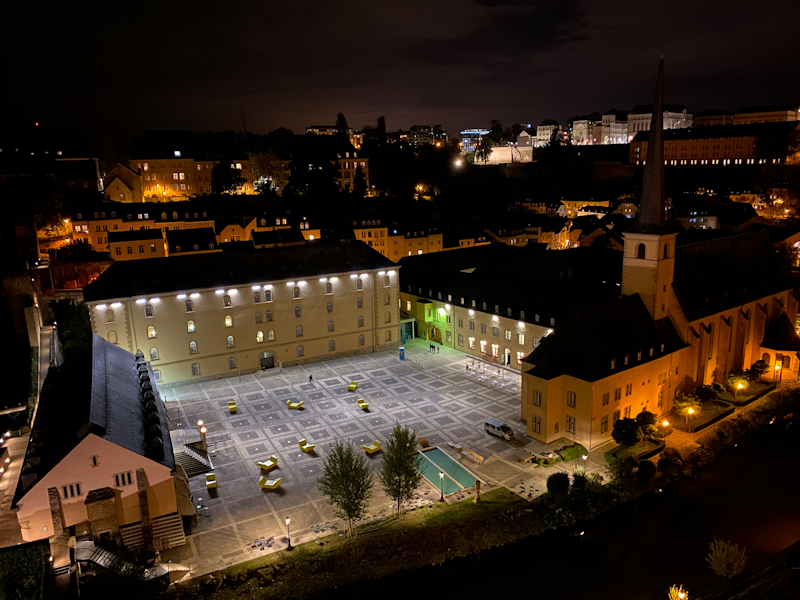
[ iPhone 11 Pro ] - [iPhone XS ] - [iPhone X ]
[ S10+(S) ] - [ S10+(E) ]
[ Pixel 3 ] - [ Mate 30 Pro ]
[ P30 Pro ] - [Xperia 1 ] - [G8 ]
One thing we notice about the new Night Mode is that it’s not really able to bring out details in areas where the sensor doesn’t see anything. For example, in this scene the roof of the abbey remains clipped to black, while other devices such as the S10 or the Pixel are able to bring out the roof’s structure and details. The darker it gets, and as long as there’s some brighter elements to the scene, we’re seemingly hitting dynamic range limitations on Apple’s night mode.
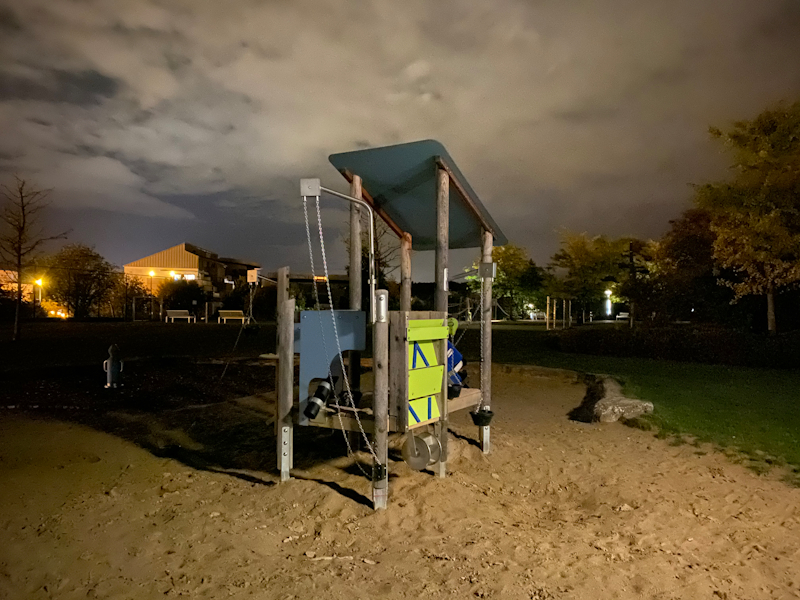
[ iPhone 11 Pro ] - [ iPhone XS ] - [ iPhone X ]
[ S10+(S) ] - [ S10+(E) ]
[ Pixel 3 ] - [ Mate 30 Pro ]
[ P30 Pro ] - [ Xperia 1 ] - [ G8 ]
In more uniformly dark areas, the iPhone is able to extract a ton of light, but in areas where the sensor just isn’t sensitive enough and it’s not able to provide any data for the algorithm to accumulate over time, it leads in some odd looking results such as this extremely pronounced shadow of the play castle.
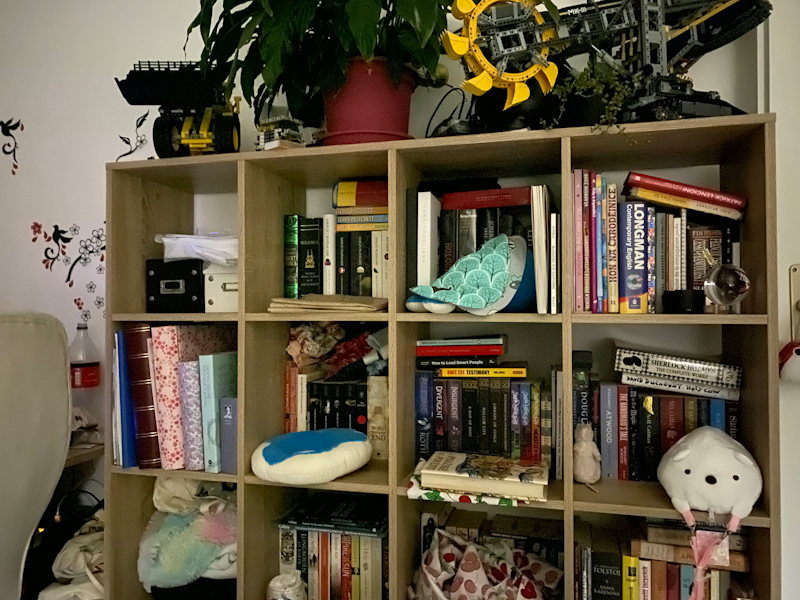
[ iPhone 11 Pro ] - [ iPhone XS ] - [ iPhone X ]
[ S10+(S) ] - [ S10+(E) ]
[ Pixel 3 ] - [ Mate 30 Pro ]
[ P30 Pro ] - [ Xperia 1 ] - [ G8 ]
Here again, in a very uniformly lit but still extremely dim scene, the iPhone 11 is able to bring out a ton of light and the result here is significantly brighter than how the scene was in reality. The iPhone beats Google and Samsung in terms of detail and only Huawei’s devices remain as the better rivals.
Low Light Conclusion – A Much Needed Feature Added, Wide Angle Lacking
Overall, Apple’s addition of the new night mode very much elevates the camera capture ability of the iPhone 11 series. It was as solemnly needed feature given that almost all other vendors in the industry have embarked on the computational photography train.
Apple’s implementation shines in a few regards: First of all the fact that it gets selected automatically rather than it being a dedicated mode that you have to switch to is a significant plus. as well as a very large practical advantage over other vendor’s camera experiences.
Quality-wise the pictures that the iPhone 11 series is able to produce in low light is top of the line and is challenged only by Huawei’s massive specialized camera sensors in terms of detail that it’s able to capture. There are a few limitations – for example the phone isn’t able to bring out details in areas where the sensor just doesn’t see anything, particularly scenes with brighter objects requiring a wider dynamic range in the capture is where things hit a snag, although details are still excellent even in these scenarios.
The biggest disappointment was the wide-angle camera. Here it’s not only that Apple’s night mode photography isn’t available for this unit, but the module doesn’t even compete against phones without their respective night modes enabled. So the iPhone 11 series is utterly put to shame when they do enable it. I do hope Apple is able to iterate on its processing for this unit as currently it’s just outright terrible and not competitive.
I do have a feeling that we’ll be seeing further updates and improvements from Apple in improving the various aspect of the camera. Already I did notice that iOS13.2 fixes exposures longer than 3 seconds for the night mode, and there’s of course the question of how Deep Fusion behaves in low-light scenarios where the night mode doesn’t kick in.










242 Comments
View All Comments
Irish910 - Friday, October 18, 2019 - link
Why so salty? If you hate Apple so much why are you here reading this article? Sounds like you’re insecure with your android phone which basically gets mopped up with by the new iPhones in every area where it counts. Shoo shoo now.shompa - Thursday, October 17, 2019 - link
Desktop performance. Do you understand the difference between CPU performance and App performance? X86 has never had the fastest CPUs. They had windows and was good enough / cheaper than RISC stuff. The reason why for example Adobe is "faster" in X86 is that Intel adds more and more specific instructions AVX/AVX512 to halt competition. Adobe/MSFT are lazy companies and don't recompile stuff for other architectures.For example when DVD encoding was invented in 2001 by Pioneer/Apple DVD-R. I bought a 10K PC with the fastest CPU there was. Graphics, SCSI disks and so on. Doing a MPEG 2 encoding took 15 hours. My first mac was a 667mhz PowerBook. The same encoding took 90 minutes. No. G4 was not 10 times faster, it was ALTIVEC that intel introduced as AVX when Apple switched to Intel. X86 dont even have real 64bit and therefore the 32bit parts in the CPU cant be removed. X86 is the only computer system where 64bit code runs slower than 32bit (about 3%). All other real 64bit systems gained 30-50% in speed. And its not about memory like PC clickers belive. Intel/ARM and others had 38bit memory addressing. That is 64gig / with a 4gig limit per app. Still, today: how many apps use more than 4gig memory? RISC went 64bit in 1990. Sun went 64bit / with 64bit OS in 1997. Apple went 64bit in 2002. Windows went 64bit after Playstation4/XboxOne started to release 64bit games.
By controlling the OS and hardware companies can optimize OS and software. That is why Apple/Google and MSFT are starting to use own SoCs. And its better for customers. There are no reason a better X86 chip cost 400 dollars + motherboard tax 100 dollars. Intel 4 core CPUs 14nm cost less than 6 dollars to produce. The problem is customers: they are prepared to pay more for IntelInside and its based on the wrong notion "its faster". The faster MSFT moves to ARM / RISCV. The better. And if the rumors are right, Samsung is moving to RISCV. That would shake up the mobile market.
Quantumz0d - Thursday, October 17, 2019 - link
Samsung just killed Texas team funding. And you don't want to pay for a socketed board and industry standard but rather have a surfacw which runs on an off the shelf processor and has small workload target in a PC ?Also dude from where you are pulling this $6 of Intel CPUs and I presume you already know how the R&D works right in Lithography ? ROI pays off once the momentum has began. So you are frustrated of 4C8T Intel monopoly amd want some magical unicorn out of thin air which is as fast that and is cheap and is portable a.k.a Soldered. Intel stagnated because of no competition. Now AMD came with better pricing and more bang for buck.
Next from Bigroom Mainframes to pocket PC (unfortunate with iOS its not because of no Filesystem anf Google following same path of Scoped Storage) microsoft put computers in homes and now they recently started moving away into SaaS and DaaS bs. And now with thin client dream of yours Itll be detrimental to the Computer HW owners or who want to own.
We do not want a Propreitary own walled gardens with orwellian drama like iOS. We need more Linux and more powerful and robust OS like Windows which handles customization despite getting sandbagged by M$ on removing control panel slowly and migrating away from Win32. Nobody wants that.
https://www.computerworld.com/article/3444606/with...
jv007 - Wednesday, October 16, 2019 - link
The lighting big cores are not very impressive this time.From 4 Watt to 5 Watt a 25% increase in power for 17% more performance.
Good for benchmarks (and the phone was actively cooled here), but not good for throttling.
7nm and no EUV, maybe next year with 5nm and EUV will improve seriously.
I wonder if we will see a A13X.
name99 - Wednesday, October 16, 2019 - link
"The lighting big cores are not very impressive this time"A PHONE core that matches the best Intel has to offer is "not impressive"?
OK then...
Total Meltdowner - Thursday, October 17, 2019 - link
Comparing this CPU to intel is silly. They run completely different instructions.Quantumz0d - Sunday, October 20, 2019 - link
It has been overblown. The Spec score is all the A series chips have. They can't replace x86 chips even Apple uses x86 cores with Linux RHEL or Free OS Linux distribution to run their services. Whole world runs on the same ISA. These people just whiteknight it like a breakthrough while the whole iOS lacks basic Filesystem access and the latest Catalina cannot run non notarized apps.Also to note the Apple First party premium optimization, that Apple pays for companies like Adobe. If you run MacOS / Trashbook Pro BGA / iOS on any non optimized SW it will be held back both on power consumption and all. It's just a glorified Nix OS and with the first party support it keeps floating. They missed out on the mass scale deployment like Windows or Linux and that's going to be their Achilles heel along with the more transformation of MacOS into iOS rather than opposite.
It's really funny when you look how 60% of the performance is max that one can get from MacOS based HW/Intel machines due to severe thinning on chassis for that sweet BGA appeal and non user serviceable HW while claiming all recycled parts and all. I'm glad that Apple can't escape Physics. VRM throttling, low quality BGA engineering with cTDP garbage etc. Also people just blatantly forget how the DRAM of those x86 processors scales with more than 4000MHz of DDR4 and the PCIe lanes it pushes out with massive I/O while the anemic trash on Apple Macs is a USB C with Dongle world, ARM replicating the same esp the Wide A series with all the Uncore and PCIe I/O support ? Nope. It's not going to happen. Apple needs to invest Billions again and they are very conservative when it comes to this massive scale.
Finally to note, ARM cannot replace x86. Period. The HPC/ DC market of the Chipzilla Intel and AMD, they won't allow for this BS, Also the ISA of x86 is so mature plus how the LGA and other sockets happen along. While ARM is stuck with BGA BS and thus they can never replace these in the Consumer market.
Let the fanboys live in their dream utopia.
tipoo - Thursday, October 17, 2019 - link
Being that the little cores are more efficient, and the battery is significantly larger, maybe they allowed a one time regresion in peak performance per watt to gain that extra performance, without a node shrink this year.zeeBomb - Wednesday, October 16, 2019 - link
the time has come.joms_us - Wednesday, October 16, 2019 - link
Show us that A13 can beat even the first gen Ryzen or Intel Skylake , run PCMark, Cinebench or any modern games otherwise this nonsense desktop level claim should go to the bin. You are using a primitive Spec app to demonstrate the IPC?I can't wait for Apple to ditch the Intel processor inside their MBP and replace with this SoC. Oh wait no, it won't happen in a decade because this cannot run a full pledge OS with real multi-tasking. =D